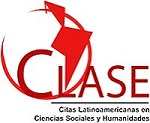Protected agriculture in Tlaxcala, Mexico: the adoption of innovations and the level of equipment as factors for their categorization.
Keywords:
innovation, tomato, index of adoption of innovations, technical networksAbstract
The aim of this study was to analyze the adoption of innovations and equipment levels of the green houses in Tlaxcala, Mexico, based on these factors suggest a categorization. A survey was made to collect production data, adoption of innovations and technical relationships of 120 producers in 10 municipalities. The results show an average 12.81 Kg.m-2 of tomato and an index of technological innovation adoption 0.33.9% of the greenhouses have a major technological performance and IN AI average and a high level of equipment, conditions for their competitiveness. Socialnetwork analysis indicated that the suppliers of inputs and seeds are those who spread innovations, non-technological innovations are little known. Under these conditions, Green house horticulture in Tlaxcala is vulnerable in a sector where the ability to innovate and invest in equipment are crucial.Article Metrics
Abstract: 1550 PDF (Español (España)): 666References
AAEN, I., SILTANEN, A., SORENSEN, C., TAHVANAINEN, V.P.(1992).A Tale of TwoCountries: Case Experiences and Expectations. In: IFIPTransactions.
A A E N , I . ( 1 9 9 4 ) . P r o b l e m s i n C A S E I n t r o d u c t i o n : ExperiencesfromUserOrganizations. En: Information and Software TechnologyNo. 36.
AGUILAR, G., Norman, A y VELÁZQUEZ, A., O. Alejandro. (2005). Manual introductorio al análisis de redes sociales. UNAM-UACh.
BIELINSKI, M. S., HENNER, A. OBREGÓN-OLIVAS y TERESA P.,SALAMÉDonoso. (2010). Producción de Hortalizas en Ambientes Protegidos: Estructuras para la Agricultura Protegida. Departamento de Horticultural Sciences, Servicio de Extensión Cooperativa de la Florida, Instituto de Alimentos y Ciencias Agrícolas, Universidad de la Florida. Disponible en internet: http://edis.ifas.ufl.edu/hs1182. Consultado 31.08.11
ESPINOSA, T., VILLEGAS, A., GÓMEZ, G., CRUZ, J. G. & HERNÁNDEZ, A. (2006). La agroindustria láctea en el valle de México: un ensayo para su categorización. En: Técnica Pecuaria en México Vol. 44 (2)
FEDER, G., JUST,R.E. and ZILBERMAN, D. (1985). Adoption of AgriculturalInnovations in DevelopingCountries: A survey. En: EconDevCultChange No. 33
FERNANDEZ, M. A., PÉREZ, A. & CABALLERO, P. (2006). Análisis económico de la tecnología de los invernaderos mediterráneos: aplicación en la producción de pimiento. En Información Técnica Económica Agraria, Vol. 102 (3).
FERNANDO, W. G. DILANTHA, RAJESH RAMARATHNAM and S. Nakkeeran.(2009). Advances in Crop Protection Practices for the Environmental Sustainability of Cropping Systems. In Integrated Pest Management: Innovation-Development Process, eds. RajinderPeshin and Ashok K. Dhawan, 131-162: Springer Netherlands.
GARCÍA, M. M., S. BALASCH, F. ALCON,M. A. FERNANDEZ, Z. (2010). Characterization of technologicallevels in Mediterranean horticultural greenhouses. En: SpanishJournalAgriculturalResearch. Vol. 8(3)
GIOVANIS, A. & SKIADAS, C. (2007). A new modeling approach investigating the diffusion speed of mobile telecommunication services in EU-15. En: Computational Economics, 29, 97-106
MUÑOZ, R. M., J. AGUILAR, A., R. RENDÓN, M., J. R. ALTAMIRANO, C. (2004). Redes de Innovación.UACh, CIESTAAM, Fundación Produce Michoacán. México.
MORGAN, P. (1998). Capacity and capacity development, some strategies. Canadian International Development Agency, Paper preparated for the Political and Social Policies Division, Policy Branch,
O E C D - E u r o p e a n C o m m u n i t i e s. ( 2 0 0 5 ) . O sl o M a n u a l : Guidelinesforcollecting and interpretinginnovation data. 3ª Edit. OCDEEUROSTAT.
ROGERS, Everett M. (1995). Difussion of innovations. The Free Press. New York.
SAGARPA.(2009). Informe de evaluación del Programa para la promoción de agricultura en condiciones controladas para productores de menos de tres hectáreas. Grupo GAM Consultores, S. C.
SARKAR J. (1998). Technological diffusion: alternative theories andhistorical evidence. En: J EconSurvNo.12
SOLLEIRO, J. L, CASTAÑON, R. (2005). Competitiveness and innovation systems: the challenge for Mexico's insertion in the global context. En: Technovation; No. 25.
SOTO J. L., HARTWICH,F., MONGE, M., AMPUERO, L. (2006). Innovación en el cultivo de Quinua en Bolivia: Efectos de la interacción social y de las capacidades de absorción de los pequeños productores. International FoodPolicyResearchInstitute.
VALENTE, Thomas W. (1995). Network models of thedifussion of innovations. Hampton Press, Inc, Cresskill, New Jersey. p. 2. 171 Pag.
REDWINE, S.T., RIDDLE, W.E. (1985). Software TechnologyMaturation. In: Proceedings of 8th International Conferenceon Software Engineering (ICSE 1985), pp. 189-200. IEEE ComputerSocietyPress, Los Alamitos
SPIELMAN, D. J., K. DAVIS, M. NEGASH, G. AYELE. (2010). Rural innovationsystems and networks: ?ndingsfrom a study of Ethiopiansmallholders. En: AgricHumValues.





















